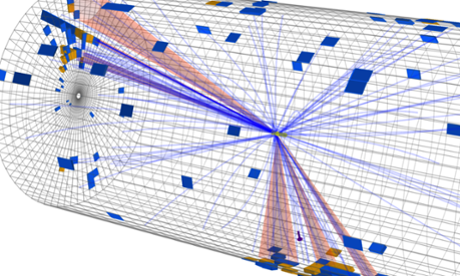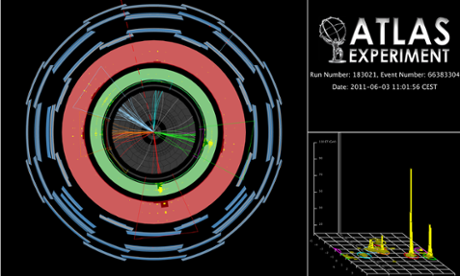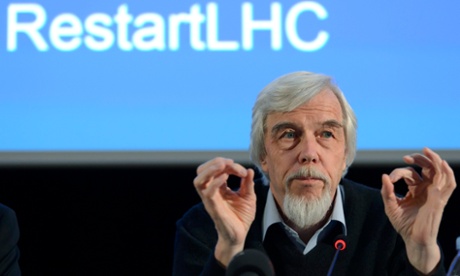It was definitely a “maintenance break”, not a holiday. Those accelerator people don’t care about holidays, as indicated by that fact that, like last year, they are working over Easter. Proton beams were injected into the ring and circulated today, an important step on the way to more physics in 2016.
This short video nicely explains what has just been achieved and what needs to happen next:
It is great to see the LHC coming back online smoothly. From the point of view of the people working on the big experiments – ATLAS (mine¹), CMS, LHCb and ALICE – this is a chance to check to that our detectors can do the same. It is all looking good.
Unlike last year, there is no big step-up in the collision energy. However, we hope for and expect a big increase in the amount of data collected at the high energies that were reached for the first time in 2015.
More data means more collisions. If you think of each collision between a pair of high-energy protons as an experiment, then essentially this year we hope to be performing billions of repeats of the experiment that we already performed billions of times last year. This may sound a bit dull, but it is far from being so.
These collisions are quantum-mechnical events. There are many possible outcomes for each collision, many different new particles that might be produced, and although physics predicts probabilities for what should happen in such a collision, it does not predict individual results. It is as though we are rolling dice. Our theory tells us each side, one to six, has an equal chance of turning up. But that doesn’t tell me what to expect on a single roll. To test the theory I have to roll the dice many times. And the more times I roll them, the more accurate will be the test.
There is particular excitement (no pun intended) this time, as we currently have a few anomalies which do not fit the theory – most recently and prominently a bump in the diphoton mass distribution at a mass of about 750 GeV discussed here by Ben Allanach and here by Ian Sample. This is the same distribution in which, at much lower masses (125 GeV), the Higgs boson showed up in 2012.
The animation of the data collection for that discovery is shown in an article I wrote about the birth of that new particle. It gives a really good impression of how collecting more data smooths out the random noise, and makes a genuine bump more prominent. We will be watching similar plots intently this year, and we will hopefully know by the end whether our latest bump is real or not.
If it is real, it will mean a new particle, not expected by, or contained within, the Standard Model of particle physics. It will be a big clue to some important answers the Standard Model does not provide, such as the nature of Dark Matter, or maybe even how gravity fits in. And it will be the biggest breakthrough in particle physics for decades. If the LHC keeps up the rate of progress it showed today, we have a very exciting year ahead of us.
¹ And here’s a blog about what ATLAS is up to now.
Jon Butterworth’s book Smashing Physics, about his involvement in the discovery of the Higgs boson, is available as “Most Wanted Particle” in Canada & the US and was shortlisted for the Royal Society Winton Prize for Science Books.









